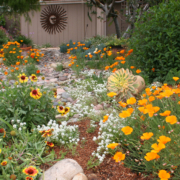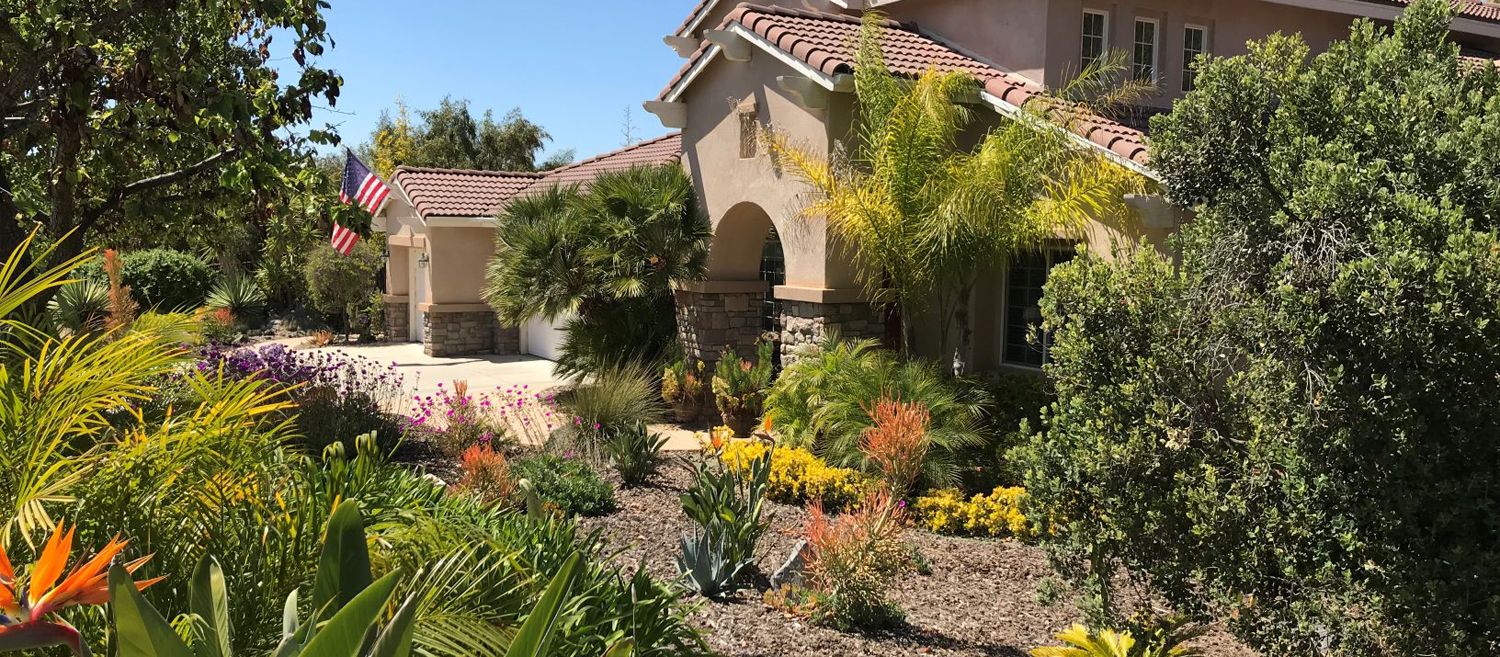When Jeanne Reutlinger moved to her Escondido home in 2019, the neglected front yard was full of weeds, baked by the sun, and car exhausts from the street. Three years later, Reutlinger’s vision and hard work for a natural low maintenance habitat created a pollinator’s paradise full of native plants. Her efforts won the 2022 City of Escondido’s Landscape Makeover Contest.
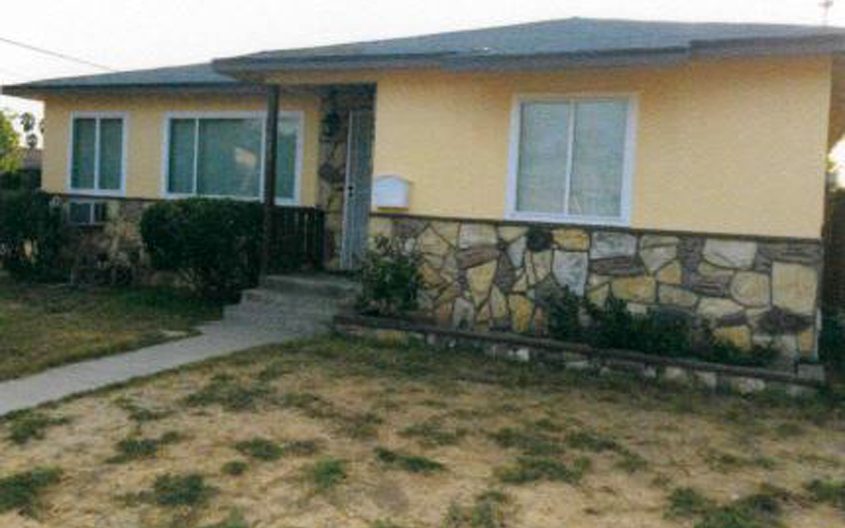
When Jeanne Reutlinger moved to her Escondido home in 2019, the neglected front yard was full of weeds, baked by the sun and car exhausts from the street. Photo: City of Escondido
“I wanted to do my own planting and create a colorful water-wise garden to attract butterflies and small birds,” says Reutlinger. At age 84, she got a helping hand transforming the “forlorn lawn” full of weeds, ruts, and dead tree roots from her grandson, John, who helped with extensive plantings. He also assisted his grandmother in creating a natural bird bath from an old tree stump that the birds love.
Creativity, ingenuity, and patience pay off
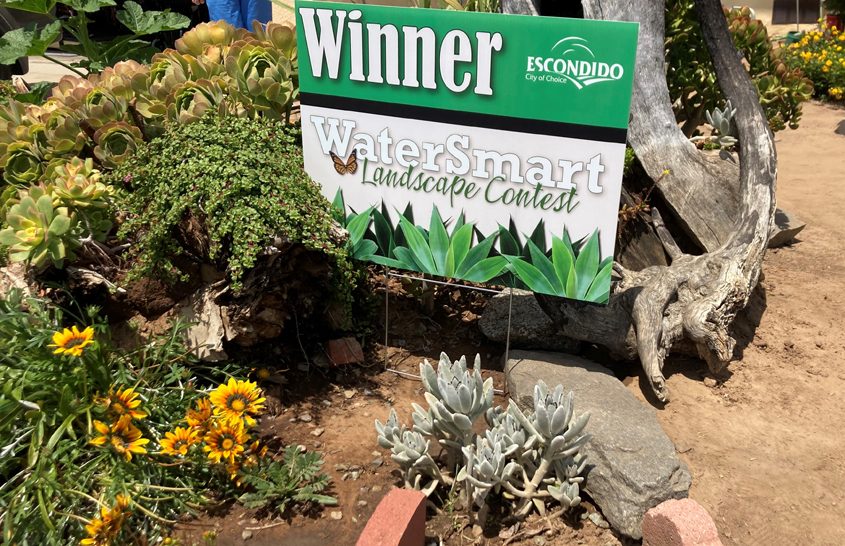
The award-winning design used plant cuttings and other cost-saving measures. Photo: City of Escondido
“I did the flower, succulent, small shrub and ground cover planting myself over the past three years. It has been a continual work in progress,” said Reutlinger. “I planted colorful heat tolerant plants and clippings from friends and neighbors that require little water and thrive in the heat. I collected rocks and cast-off bricks to make several different beds for my plantings. I dig around each plant and make a berm of soil to hold the water in to prevent runoff.”
Reutlinger said the cost for the makeover was minimal due to her creativity and by tackling the work herself. “It is easy to start plants from cuttings and saves money if one is patient to nurture the little cuttings,” said Reutlinger.
Native garden nurtures pollinators
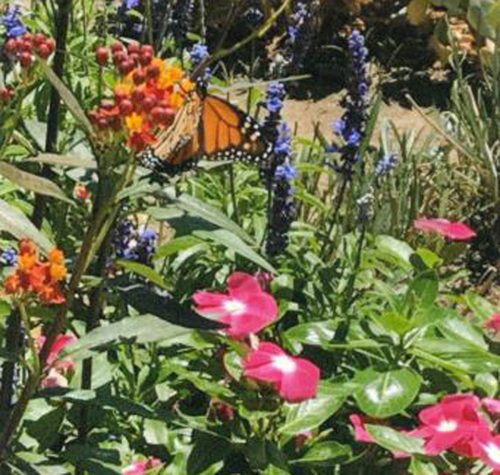
The native plant garden attracts pollinators, including endangered Monarch butterflies. Photo: City of Escondido
The yard is filled with California Poppies, giant Gazania Daisies (which reseed themselves constantly), and marigolds which Reutlinger replants each year with seeds from the previous year’s flowers. Reutlinger planted bougainvillea, rosemary, sea lavender, lantana, succulents, and multiple milkweed varieties. Reutlinger adds seasonal colorful nursery flowers in the spring to enjoy during cooler, rainier weather.
“The many birds with their cheerful songs that enjoy my birdbath in the mornings are a delight,” said Reutlinger. “It is a joy to see the many Monarch butterflies that have made their home in my yard with the various milkweed plantings in my garden. I have been able to watch the full life cycle of the Monarch from egg to growing caterpillar to chrysalis to beautiful adult butterfly right in my own yard.”
Colorful yard draws compliments
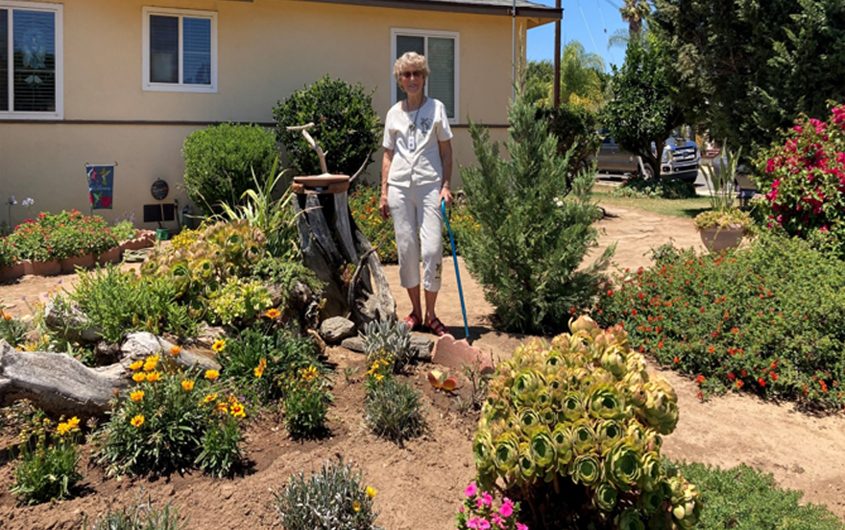
The results of Jeanne Reutlinger’s hard work benefit her entire neighborhood. Photo: City of Escondido
Reutlinger says she gets compliments from her neighbors, who enjoy the beauty and color her yard adds to the neighborhood. “It was once a bleak and barren corner and has now been transformed with a lot of love and enjoyment over the years into a water-wise habitat for birds and butterflies and it gives smiles to all who pass by,” she said.
Reutlinger chooses to hand water her plants, allowing her to control the amount of water each plant receives. She also relishes what she calls sunshine therapy. “Hand watering gets me out of the house every day to enjoy my garden and soak up the vitamin D and get the exercise and movement that my 84-year-old self needs,” said Reutlinger.
Up to 80% of local household water consumption is outdoors. The annual Landscape Makeover Contest aims to inspire residents to consider a landscape makeover by showcasing the beauty and variety of water-efficient landscapes.
Interested residents can learn more about WaterSmart Living, including the 2023 contest and classes on the WaterSmartSD website.
(Editor’s note: The City of Escondido is one of the San Diego County Water Authority’s 24 member agencies that deliver water across the metropolitan San Diego region.)






